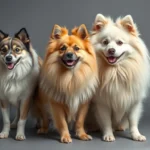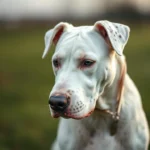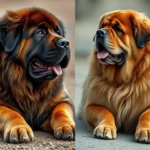
The world of dog breeds is vast and diverse, each with its unique history, characteristics, and care requirements. One breed that stands out due to its distinctive features and rich cultural background is the Kai Ken. This article delves into the fascinating story of the Kai Ken, covering its history, physical traits, temperament, health considerations, and much more.
History of the Kai Ken
Origins of the Breed
The Kai Ken, also known as the Kai Dog, hails from the mountainous regions of Japan, particularly the Yamanashi Prefecture. Believed to have been bred for hunting purposes, these dogs were adept at tracking various game, including deer and boar. The breed’s historical significance is deeply intertwined with Japanese culture, where it is often celebrated in folklore and art.
In Japan, the Kai Ken is one of the native breeds classified as “Nihon Ken,” which highlights its importance in the country’s cultural heritage. This breed has been recognized as a natural monument in Japan since 1934, showcasing its value as a symbol of Japanese history and tradition.
Evolution Over Time
Over the years, the Kai Ken has evolved, adapting to changes in hunting practices and living conditions. While they were once primarily utilized for hunting, their versatility has allowed them to transition into beloved family pets. Internationally, the breed gained recognition in the late 20th century, with efforts made to preserve its lineage and promote understanding of its unique characteristics.
Physical Characteristics
Size and Weight
The Kai Ken is a medium-sized dog, with males typically weighing between 40 to 65 pounds and females ranging from 30 to 50 pounds. Their height generally falls between 17 to 22 inches at the shoulder. In comparison to similar breeds, such as the Akita or Shiba Inu, the Kai Ken features a more athletic build, which enhances its agility and athleticism.
Coat and Color Variations
The coat of a Kai Ken is one of its most distinctive features. It is double-layered, with a coarse outer coat and a soft undercoat, providing insulation against various weather conditions. Color variations include brindle, black, and red, with brindle being the most common. This striking coat pattern not only adds to the breed’s appeal but also serves as camouflage during hunting.
Distinctive Features
Notable physical traits of the Kai Ken include its erect ears and bushy tail, which curls over its back. These features are essential for breed identification and add to the dog’s overall appeal. The Kai Ken’s expressive eyes convey intelligence and alertness, making it an engaging companion.
Temperament and Behavior
General Temperament
The Kai Ken is known for its loyal and affectionate nature. These dogs are typically reserved with strangers but are deeply devoted to their families. Their temperament is often described as alert, intelligent, and playful, making them suitable for various households. Compared to other breeds, such as the Labrador Retriever, the Kai Ken’s demeanor is more independent and reserved.
Socialization Needs
Early socialization is crucial for the Kai Ken to develop into a well-rounded adult dog. Exposing them to various environments, people, and other animals from a young age fosters a balanced temperament. Training should include positive reinforcement methods to encourage good behavior and build a strong bond between the dog and its owner.
Intelligence and Trainability
The Kai Ken is known for its intelligence, making it relatively easy to train. However, their independent nature may sometimes pose challenges. Consistency and patience are vital in training sessions. Engaging them in mental stimulation activities, such as puzzle toys and obedience training, can enhance their learning experience and keep them mentally sharp.
Health and Care Requirements
Common Health Issues
Like all breeds, the Kai Ken is prone to certain health issues. Common concerns include hip dysplasia, eye conditions, and skin allergies. Regular veterinary check-ups are essential for early detection and management of these health issues. Responsible breeding practices also play a significant role in minimizing health problems within the breed.
Exercise Needs
The Kai Ken is an energetic breed that requires ample physical activity to stay healthy and happy. Daily exercise should include at least one hour of vigorous activity, such as hiking, running, or interactive play. Engaging in various activities not only helps maintain their physical health but also prevents behavioral issues stemming from boredom.
Grooming and Maintenance
Grooming a Kai Ken is relatively straightforward. Their double coat requires regular brushing, particularly during shedding seasons, to minimize loose hair. Bathing should be done as needed to keep their coat clean and healthy. Seasonal care considerations include protecting their paws from extreme weather and ensuring proper hydration during warmer months.
Living with a Kai Ken
Ideal Living Environment
The Kai Ken is adaptable but thrives in homes with a moderate amount of space. While they can live in apartments, having access to a yard is beneficial for their exercise needs. A secure, fenced area is essential to allow them to roam freely without the risk of escaping.
Family Compatibility
This breed is generally good with children, making them suitable for family life. Their playful nature and protective instincts contribute to a loving family dynamic. However, supervision is necessary when interacting with young children to ensure safety on both sides. The Kai Ken can also coexist peacefully with other pets, particularly if raised together.
Lifespan and End-of-Life Considerations
The average lifespan of a Kai Ken ranges from 12 to 15 years. As they age, it’s crucial to monitor their health closely and adjust their care as needed. Discussions regarding end-of-life care should involve family members and veterinarians, ensuring that decisions are made with compassion and the dog’s best interests in mind.
Adoption and Breeding
Finding a Kai Ken
For those interested in bringing a Kai Ken into their home, it’s essential to locate reputable breeders or rescue organizations. Researching breed-specific rescues can provide valuable insights into available dogs needing homes. Questions to ask breeders include inquiries about health testing, lineage, and temperament of the puppies.
Cost of Ownership
Adopting or purchasing a Kai Ken involves initial costs, including adoption fees or purchasing a puppy from a breeder. These fees can vary significantly based on the dog’s lineage and breeder reputation. Ongoing expenses, such as food, veterinary care, grooming, and training, should also be considered when budgeting for a Kai Ken.
Conclusion
The Kai Ken is a breed that embodies loyalty, intelligence, and a rich cultural heritage. Its unique characteristics, combined with its affectionate nature, make it an appealing choice for many dog lovers. Potential owners should appreciate the breed’s specific care requirements and be willing to invest time and effort into training and socialization.
Understanding the Kai Ken not only enhances appreciation for the breed but also encourages responsible pet ownership. By considering the unique qualities of the Kai Ken, you can make an informed decision about whether this remarkable breed is the right fit for your home.









